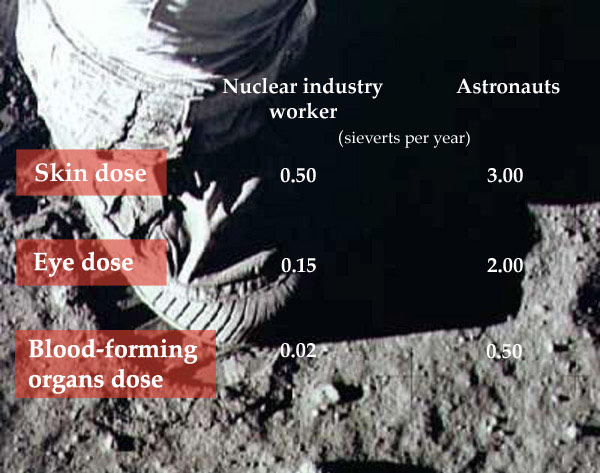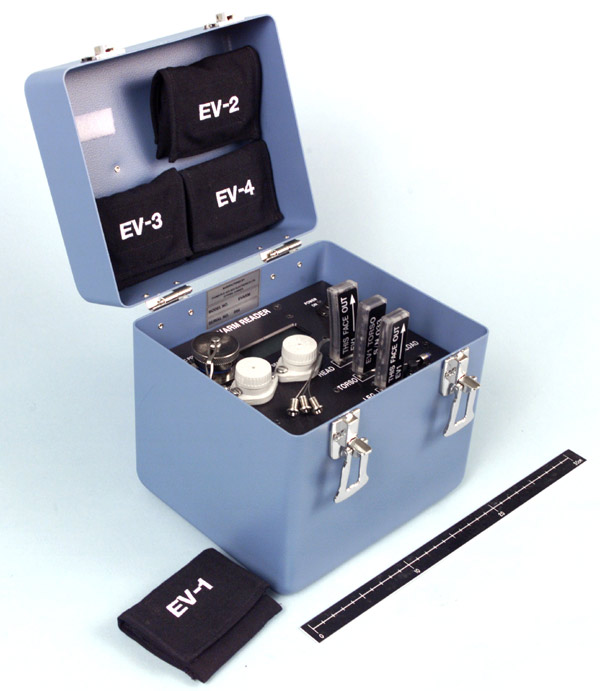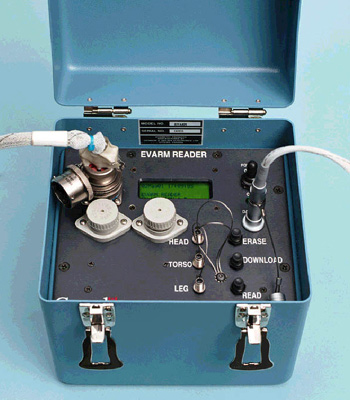Little transistor records radiation levels
Results
The EVARM project, led by the Thomson Nielsen firm (2002-2003), involved measuring how much radiation astronauts are exposed to during spacewalks. On certain parts of their bodies, astronauts receive radiation doses that are 6 to 25 times higher than those received by workers in the nuclear industry. This project helped improve a radiation detector that is now being used in over 1,000 cancer clinics worldwide. This device better protects medical staff who administer radiation treatments as well as targets and measures radiation doses delivered to tumors.
Measuring radiation: A question of survival
The EVARM experiment measured the radiation delivered to the most sensitive organs: the skin, eyes, bone marrow, and lymphatic organs. Spacesuit shielding influences the quantity and type of radiation absorbed by astronauts. Overexposure may burn the skin, cause cataracts in the lens of the eye and the immediate depletion of blood cells, as well as increase the risk of cancer.
We can compare the internationally recognized limits of radiation exposure for workers and the maximum allowed doses for astronauts.
The table shows that radiation exposure for astronauts to the skin is six times higher, to their eyes, 13 times higher, and to their blood-forming organs, 25 times higher.
In the EVARM experiment, radiation was measured by means of three dosimeters in the form of small badges. These dosimeters, which are actually MOSFETs (metal-oxide semiconductor field effect transistors), were carried in pockets inside the astronaut's spacesuit. Data recorded by these badges were then transferred to a laptop computer and sent to researchers.

Table comparing internationally established annual limits for workers and the doses astronauts are exposed to. (Credit: International Commission on Radiological Protection, 1977)

American astronaut David Wolf wears the EVARM dosimeter on a spacewalk, October 10, 2002. He is being moved by Canadarm. (Credit: NASA)

A badge was placed on the lower left leg in a pocket of the astronaut's liquid cooling garment. Two other badges were placed on the torso. (Credit: NASA)

The EVARM equipment had to be compact and light to be carried to space, where there is a limited room for storage.
Improving spacesuits
Measurements taken over a number of spacewalks (EVAs or extravehicular activities) were studied. The analyses took various factors into account: the time and place of the EVA as well as the orbit and altitude of the International Space Station. Another factor to consider was the proximity of the station, which may block radiation and influence the results of the experiment.
Researchers predicted that at certain times, they might be about ten times higher than levels inside the space station. The information gathered is helping to identify which parts of the body are exposed to the highest levels of radiation, in order to improve spacesuit shielding.
A promising technology for cancer treatment
The space industry will not be the only one to benefit from the technology and results of the EVARM experiment. Similar devices are already being used in cancer treatment. They are small enough to be placed on any part of the body during a radiotherapy session, helping doctors to target malignant tumours by providing real-time data on the radiation doses reaching the organs.
The shielding designed for this experiment can also be used to protect people working in areas exposed to high levels of radiation, such as nuclear power plants.

The EVARM reader
The EVARM reader conveys data gathered by the EVARM badges to the Control Centre. During flight, badges are stowed in the lid.

EVARM badges
